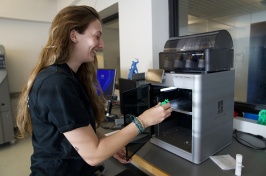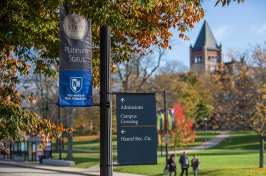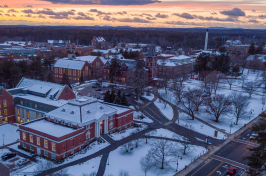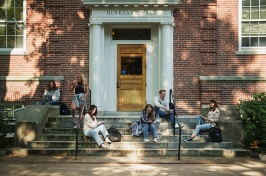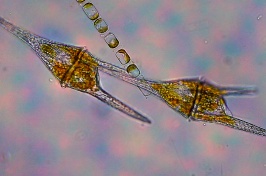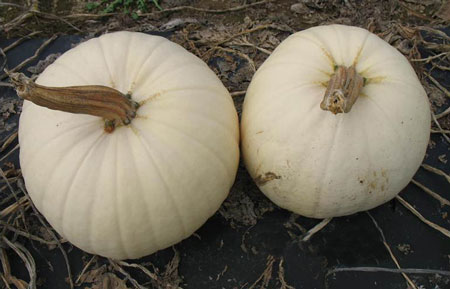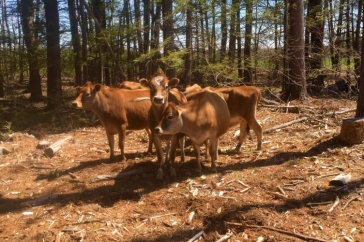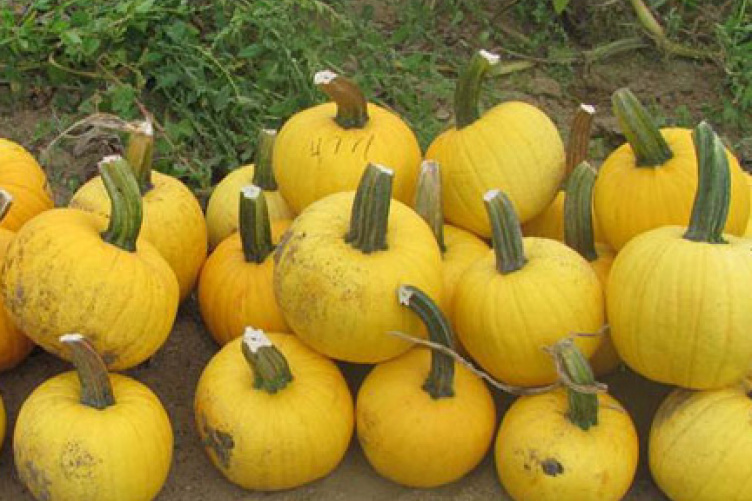
There’s a new pumpkin in the patch and consumers have Brent Loy to thank.
A professor of plant biology and genetics, Loy is a plant breeder. During his 45 years doing research at UNH, he has developed more than 60 varieties of plants that have been licensed to commercial seed companies by the university.
The jack-o-lantern Sunlight is one of four new ornamental pumpkins resulting from Loy’s pumpkin breeding program and soon to appear in seed catalogs. (Jack-o-lantern and ornamental pumpkin are used interchangeably in the United States. In other parts of the world, pumpkin may refer to winter squash.)
|
|
Two years ago, seed catalogs began selling Loy’s white pumpkin, Moonshine. Other breeders had come up with a white pumpkin before then, but there were problems, particularly with the stem.
“With Moonshine, the goal was to develop a white pumpkin with a good handle. The genetics of white pumpkin pigmentation and strong fruit stems are fairly complex which undoubtedly discouraged previous breeders in tackling the problem,” says Loy, whose area of expertise is melons, winter and summer squash, ornamental pumpkins and gourds.
Developing a plant that would produce a white pumpkin was a response to the market. Loy’s seeds are sold in seed catalogs around the world, including Johnny’s Selected Seeds, Rupp Seed, Stokes Seeds, Harris Seeds and High Mowing Organic Seeds.
“I took it on as a breeding project because I felt a good white pumpkin was needed. With any breeding project, I have to believe it has potential. If there’s no interest — if the seed companies aren’t interested — you’re developing something that will never get out to growers,” Loy says.
There are more than 100 varieties of pumpkins. The market for ornamental pumpkins is somewhat greater than squash varieties, a bit of a frustration to Loy because, he says, eating quality in some types of squash can be markedly improved, but getting varieties into the market is difficult.
Loy’s off-colored pumpkins, on the other hand, are meant for decoration. “I never consider edibility. I start with the premise that ornamental pumpkins are not going to be eaten. I’m not saying they can’t be used in a pie but that’s not the major use for most growers,” he says. “Squash doesn’t have the same kind of interest, where with ornamentals, you have a white one, and wow, everyone’s excited.”
Next up are four new pumpkin varieties that have powdery mildew resistance, making them more tolerant to the fungus.
“It takes a while to incorporate disease resistance into pumpkins,” Loy says. “And strong stems — we’ve been concentrating on those. In many pumpkin varieties, the stems eventually shrivel as the pumpkins mature, reducing marketability.”
Genetically uniform breeding lines take several generations to develop, and then hybrid combinations have to be produced. Before the seed catalogs take them on, hybrid varieties have to be tested in several regions to know they can thrive in other climates. “The seed companies aren’t going to produce something that just grows in New Hampshire. It has to grow well in other places,” Loy says.
Public breeders like Loy have been on the decline, particularly in the pumpkin and squash field, he says. In fact, he thinks he is probably the only one in North America.
“Public breeders working with minor crops don’t get a lot of grant money. The advantage I have over commercial breeders in my work is research quality. Some commercial breeders might not have published research, but they have access to published research and to more unlimited funding,” Loy says.
Funding aside, Loy continues his work, striving to develop the next successful squash or melon or gourd or--pumpkin.
Originally published by:
UNH Today
Photos courtesy Brent Loy
-
Written By:
Jody Record ’95 | Communications and Public Affairs | jody.record@unh.edu















